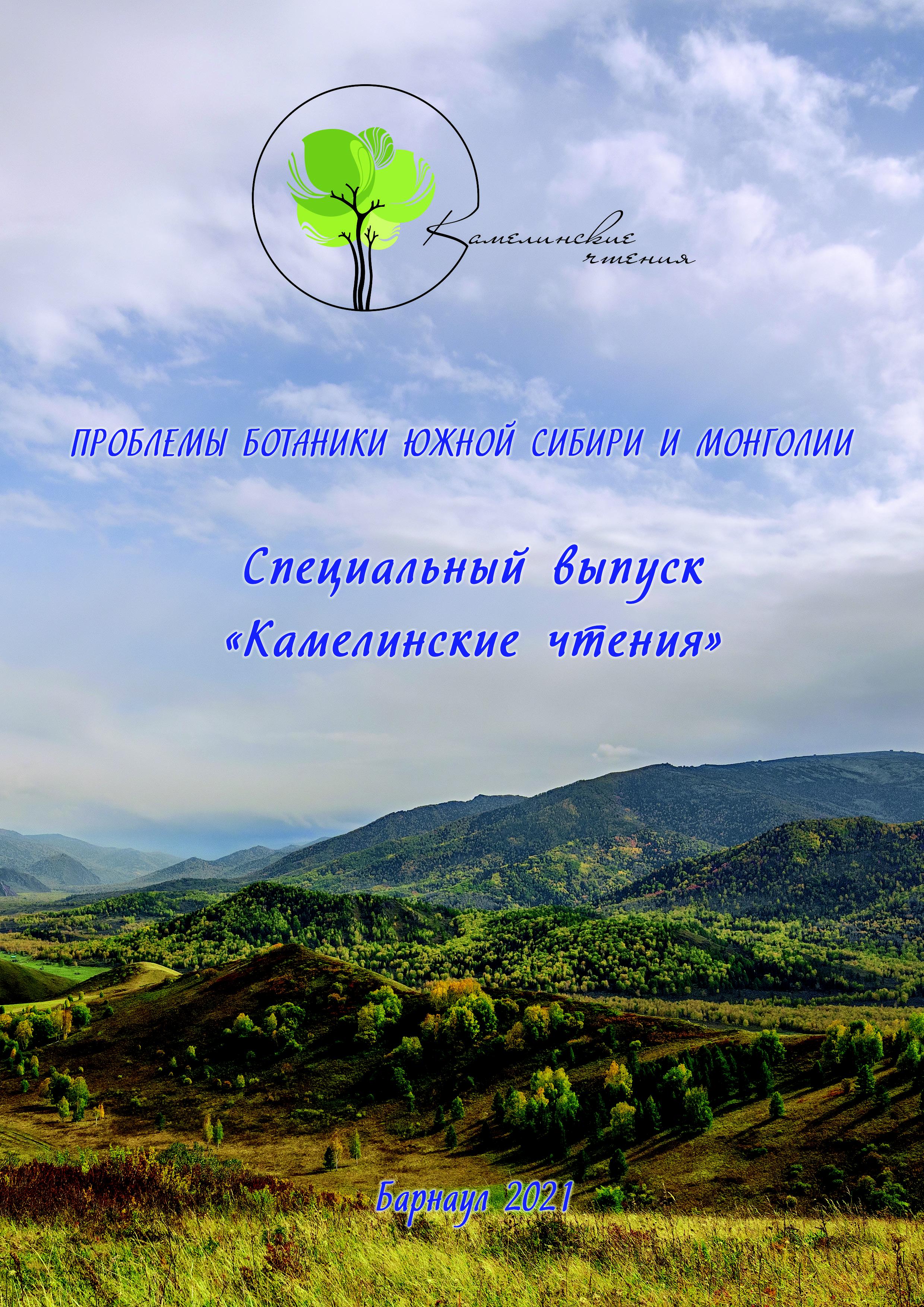Analysis of forest cenoflora in the eastern part of the Russian Caucasus
УДК 581.526.42(479)
Abstract
The article analyzes the systematic composition of the forest cenoflora in the eastern part of the Russian Caucasus, numbering 460 species and 241 genera from 95 families. The largest are indicated (Asteraceae, Rosaceae, Poaceae). The total number of species in these families is 118 (25.7 %). Relatively large families (Orchidaceae, Apiaceae, Cyperaceae) include only 64 (13.9 %) species. Large genera (Carex, Hieracium, Rosa, Viola) contain 50 species (20.74 %) of the forest cenoflora of the eastern part of the Russian Caucasus. Middle genera, numbering from 9 to 5 species, are also few in number, there are ten of them: Viola (9), Veronica (7), Rubus (7), Populus (6), Dryopteris, Sorbus, Corydalis, Acer, Primula, Scrophularia (by 5 types). They account for 59 species (12.8 %). There are 82 oligotypic genera, numbering from 4 to 2 species in the forest cenoflora of the eastern part of the Russian Caucasus (34.0 % of the total number of genera). Of these, 13 genera contain 4 species each, 24 genera - 3 species each and 45 genera - 2 species each. In total, the share of oligotypic genera is 214 species (46.5 %). Consequently, the systematic structure of the forest cenoflora of vascular plants in the eastern part of the Russian Caucasus is heterogeneous, contains all taxa of the rank of a division with a significant dominance of Magnoliophyta (92.2%), other taxa of this rank are represented insignificantly.
Downloads
Metrics
References
Гусева И.Н. Флора лесов Центрального Предкавказья и её анализ: автореф. дисс. ... канд. биол. наук. -Ставрополь, 2015. - 24 с.
Дакиева М.К. Флора республики Ингушетии и её анализ: автореф. дисс. ... канд. биол. наук. - Ставрополь, 2003. - 24 с.
Елумеева Т. Г., Онипченко В. Г. Оценка родового коэффициента в безлесных фитоценозах Тебердинско-го заповедника // Актуальные проблемы геоботаники: III Всерос. школа-конф. II часть. - Петрозаводск: Изд-во Карельского НЦ РАН, 2007. - С. 322-326.
Иванов А.Л. Таксономическая структура флоры Российского Кавказа // Биоразнообразие, биоресурсы, вопросы биотехнологии и здоровье населения Северо-Кавказского региона: Материалы VII (64-й) ежегодной науч.-практ. конф. «Университетская наука - региону» Северо-Кавказского федерального университета. -Ставрополь: Изд-во СКФУ, 2019. - С. 208-211.
Камелин Р. В. Проект «Флора России (Российской федерации)» // Вестник Российской Академии наук, 2007. -Т. 77, № 1. - С. 22-26.
Муртазалиев Р. А. Конспект флоры Дагестана. - Махачкала: Изд-во ИД «Эпоха», Т. I-IV, 2009: Т. I, 2009. -320 с.; Т. II, 2009. - 248 c.; T. III, 2009. - 304 c.; T. IV, 2009. - 232 c.
Омархаджиева Ф. С. Анализ флоры Чеченской республики: автореф. дисс. ... канд. биол. наук. - Грозный, 2011. - 26 с.
Толмачёв А. И. Методы сравнительной флористики и проблемы флорогенеза. - Новосибирск: Наука, 1986. -195 с.
Толмачёв А. И. Введение в географию растений. - Л.: Изд-во Ленинградского ун-та, 1974. - 244 с.
PartelM., ZobelM., Zobel K., van derMaarelE. The species pool and its relation to species richness - evidence from Estonian plant communities // Oikos, 1996. - Vol. 75, № 1. - P. 111-117.



